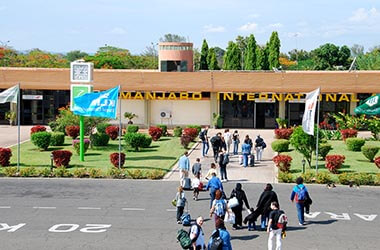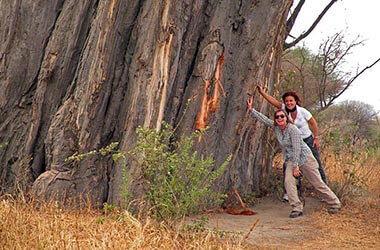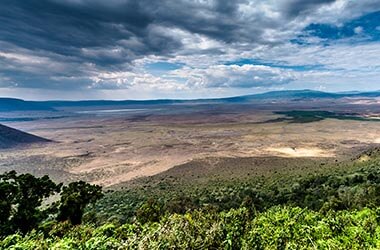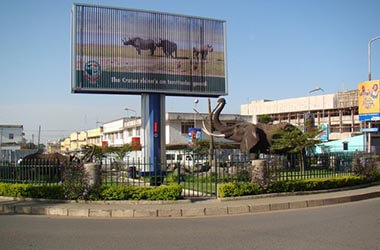It is as short as it is full of emotions and enchanting places to visit. The Antelope Safari is the perfect itinerary in Tanzania for those who can only treat themselves to a few days, and want to make the most of Tanzania. Our staff, who will accompany you on this all-inclusive safari with accommodation, and your personal guides, will take you to discover the Tarangire National Park and the Ngorongoro Conservation Area. These two places have the highest animal concentration in the area, along with some of the most beautiful landscapes in Africa.
Travel Information
This vacation lasts a total of 4 days.
• Destinations: Tarangire, Ngorongoro
• Lunch: packed/picnic
• Dinner and Breakfast: at the Lodge
• Tour type: Private Safari
• AMREF Insurance
Servizi aggiuntivi
- Visita al Villaggio Masai Boma
- Gita in Bicicletta nella savana
- Camminata naturalistica al Lake Duluti
Prezzi
QUOTE A PARTIRE DA 1.090 €
* Nei prezzi esposti il volo non è compreso!
*supplemento ad Agosto, Natale e Capodanno
4 days safari in Tanzania
PRICES STARTING FROM 1.120 USD
*supplement in August, Christmas and New Year
* The prices shown do not include the flight!
Travel information
Destinations: Tarangire, Ngorongoro
Lunch: in the parks
Dinner and breakfast: at the lodges and tented camps
Type: private or group safari
Amref
Additional services
Visit to the Masai Boma Village
Bike Ride in the Savannah
Nature Walk at Lake Duluti

Discover the Antelope Itinerary
DAY 1

Arrival at Kilimanjaro airport and departure for Arusha.
Your unforgettable safari in Tanzania begins with your arrival at Kilimanjaro Airport, where you will be welcomed by our staff. You’ll then savour some typical local dishes, and after a quick and easy briefing, you can choose to either visit the City of Arusha or move to your Lodge.
DAY 2

Discovering Tarangire Park
So here you are on this second day of your fantastic adventure in Tanzania. After visiting Arusha, today, Safari Avventura takes you to discover the Tarangire National Park, one of the most beautiful places in the world for those who love animals and landscapes marked by tremendous and uncontrolled vegetation.
Traversed by an important river, the Tarangire is home to many different animal species, which come in search of water, plants and grass to feed on. The park is in fact the destination of many great migrations that see thousands of animal species moving according to the seasons.
In addition to the baobabs, you will also see the five largest animals in Tanzania, the famous Big Five, including many other species, as well as 500 different bird varieties.
On request, it is possible to make night excursions by jeep to the Lolkisale area. Packed lunch, and dinner and overnight accommodation at the lodge.
DAY 3

Ngorongoro Crater
The destination of the day is the Ngorongoro Crater located in the vast Ngorongoro Conservation Area, one of the most incredible attractions offered by African nature. Over 30,000 animals and a large number of birds live in this incredibly evocative setting, and have settled in thanks to the presence of the lakes.
Within the park you can meet, photograph and film buffaloes, lions, rhinos, elephants and several other animals, predators and herbivores alike. The animals and birds share the space with the Masai people of the surrounding area, the only ones with grazing rights.
Packed lunch, dinner and overnight accommodation at the lodge.
DAY 4

Trip to Arusha and return back home
Today we return home, but there is still time for a trip to Arusha before leaving, with its characteristic and fascinating market where you can do some souvenir shopping.
Should you still want to stay in Tanzania, you can buy “the sea extension package that includes Zanzibar, Pemba and mafia”.
